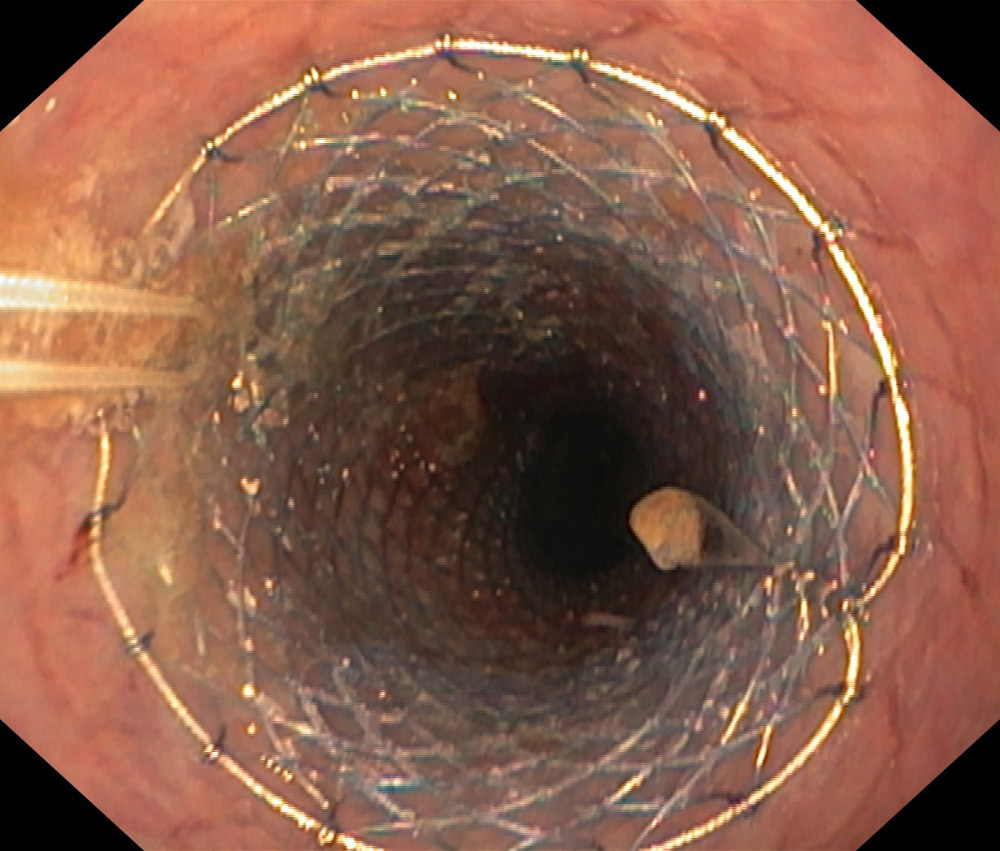Abstract
Introduction: Anastomotic leak (AL) is one of the most serious surgical complications after esophagectomy. Endoscopic, radiological and surgical methods are used in the treatment of AL. The aim of this study was to retrospectively evaluate our therapeutic procedures and results of AL treatment after Ivor Lewis esophagectomy (ILE).
Methods: Retrospective audit of all ILEs performed in the years 2005−2019. Evaluation of AL treatment results according to Esophagectomy Complication Consensus Group (ECCG) classification and according to the primary therapeutic procedure with a focus on the treatment with esophageal stent.
Results: Out of 817 patients with ILE, AL was detected in 80 patients (9.8%): ECCG type I 33 (41%), type II 23 (29%) and type III 24 (30%) patients. Some 33 patients (41%) were treated conservatively. Esophageal stents were used in 39 patients (49%), of which 18 (23%) had concomitant percutaneous drainage and 17 (21%) were reoperated. Reoperation without a stent insertion was performed in 7 patients (9%). Esophageal diversion with cervical esophagostomy was performed in a total of 16 patients (20%). Esophageal stent treatment was successful in 24/39 patients (62%). Airway fistula occurred in 4 patients treated with stent (10%). Endoscopic vacuum therapy was successfully used in three patients after stent failure. Eight patients (10%) died as a result of AL. Mortality of AL type I, II and III was 0%, 4% and 29%.
Conclusion: Successful treatment of AL requires an individual and multidisciplinary approach. The primary effort should aim to preserve anastomosis using endoscopic and radiological methods. In...

